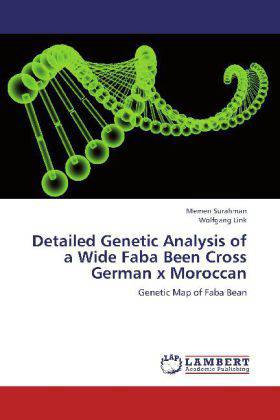
- Afhalen na 1 uur in een winkel met voorraad
- Gratis thuislevering in België vanaf € 30
- Ruim aanbod met 7 miljoen producten
- Afhalen na 1 uur in een winkel met voorraad
- Gratis thuislevering in België vanaf € 30
- Ruim aanbod met 7 miljoen producten
Zoeken
Detailed Genetic Analysis of a Wide Faba Been Cross German x Moroccan
Genetic Map of Faba Bean
Memen Surahman, Wolfgang Link
Paperback | Engels
€ 48,45
+ 96 punten
Omschrijving
As an additional tool for the genetic improvement of faba bean, an Old World grain legume, a preliminary linkage map of a wide cross was established and several QTL for agronomic traits were identified. All factors in the field experiments, the F7 lines of the cross (N = 253), the two locations and their interactions significantly affected the agronomic traits, except for the effect of genotypes on grain yield. To create a linkage map, RAPD markers were established for this cross and the 57 RI F7-sample lines. A total of 77 markers were assayed segregating in the 57 RI lines and grouped into 14 linkage groups. The average distance between markers of the recent faba bean map is 14.66 cM Haldane, the map can be considered as sufficiently dense for a QTL analysis. In this study, seven QTL were detected. Three QTL, one for time to flowering, one for time to maturity, and one for plant height, respectively, were fully linked with the marker AK18500. These findings may well stimulate and improve the molecular breeding research in faba bean.
Specificaties
Betrokkenen
- Auteur(s):
- Uitgeverij:
Inhoud
- Aantal bladzijden:
- 96
- Taal:
- Engels
Eigenschappen
- Productcode (EAN):
- 9783659179044
- Verschijningsdatum:
- 26/07/2012
- Uitvoering:
- Paperback
- Afmetingen:
- 152 mm x 220 mm
- Gewicht:
- 150 g

Alleen bij Standaard Boekhandel
+ 96 punten op je klantenkaart van Standaard Boekhandel
Beoordelingen
We publiceren alleen reviews die voldoen aan de voorwaarden voor reviews. Bekijk onze voorwaarden voor reviews.











